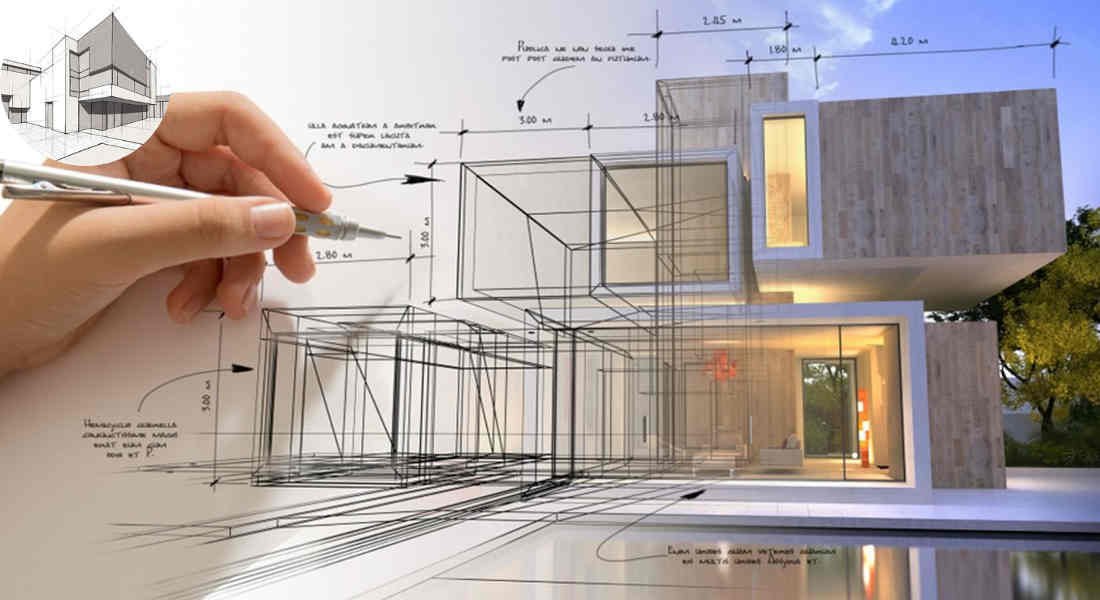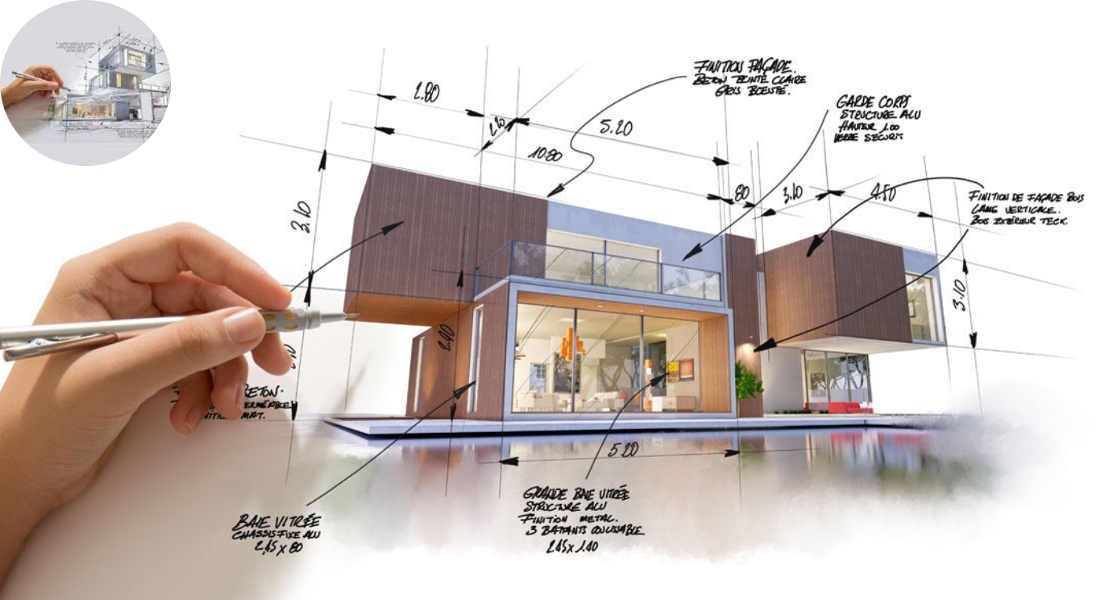Have you ever looked at a house and wondered what story it tells? Iconic house designs often reflect not only the homeowner’s preferences but also the cultural and historical context in which they were created. Understanding house architecture can profoundly impact how we perceive and interact with our living spaces.
By the end, you’ll gain a deeper appreciation for the homes around you and perhaps even some ideas for your future projects!
Understanding House Architecture: The Basics

Definition of House Architecture
At its core, house architecture refers to the art and science of designing and constructing homes. It’s about creating spaces that are not only functional but also aesthetically pleasing. Think of it as a blueprint for how we live our lives.
Importance of House Architecture
Why does house architecture matter? Here are a few reasons:
- Comfort: A well-designed home enhances our day-to-day comfort and satisfaction.
- Safety: Proper architectural design ensures that structures are safe and durable.
- Aesthetics: A beautiful home can uplift spirits and create a sense of pride.
You may also read (does extreme makeover home edition really take a week).
Brief History
House architecture has undergone significant evolution over the centuries. From cave dwellings to modern skyscrapers, each era has contributed unique styles and techniques. For instance, ancient civilizations like the Egyptians and Greeks focused on grand structures, while contemporary designs often emphasize minimalism and sustainability.
Relation to Architectural Design
House architecture is a crucial part of the broader field of architectural design. It encompasses the principles that guide the organization of spaces, the materials used, and the overall artistry involved in creating a home.
What is Architectural Design?

Definition and Explanation
So, what exactly is architectural design? It refers to the formal process of planning and creating buildings and spaces. This involves a blend of creativity, technical knowledge, and an understanding of how people interact with their environments.
Key Components
Architectural design can be broken down into several key elements:
- Form: The shape and structure of the building.
- Function: How the space will be used.
- Aesthetics: The visual appeal of the design.
- Sustainability: The environmental impact of the materials and methods used.
The Creative Process
Architects and designers follow a systematic approach during the design process. They start with a client’s vision, conduct research, and create initial sketches. This collaborative process ensures that the final design meets the client’s needs and desires.
Visual Examples
Incorporating images or diagrams can significantly enhance understanding. For example, before-and-after photos of a renovated space can illustrate the impact of thoughtful architectural design.
The Relationship Between House Architecture and Architectural Design

How Architectural Design Shapes House Architecture
The principles of architectural design directly influence house architecture. For instance, a house designed with an open floor plan reflects modern living trends, promoting social interaction and a sense of spaciousness.
Case Studies
Consider the Fallingwater House, designed by Frank Lloyd Wright. Its harmonious integration with nature showcases how architectural design can transform a simple structure into a masterpiece. Such examples highlight the profound impact of design principles on house architecture.
User Experience
Good design enhances the living experience. Homes that prioritize natural light, efficient layouts, and comfortable spaces promote well-being and satisfaction among their inhabitants.
The Architectural Design Process: Step by Step

Understanding the architectural design process can demystify how your dream home comes to life. Here’s a breakdown of the typical steps involved:
Step 1: Client Needs Analysis
Designers begin by assessing their client’s needs and understanding their lifestyles, preferences, and the site’s specific requirements.
Step 2: Concept Development
This phase involves brainstorming and creating initial sketches based on the gathered insights. Creativity reigns here!
Step 3: Design Development
Ideas are refined into detailed plans and models. This step often includes consultations with engineers and contractors to ensure feasibility.
Step 4: Material Selection
Choosing the right materials is critical for aesthetics and durability. This may include selecting eco-friendly options to enhance sustainability.
Step 5: Construction Documentation
Architects prepare drawings and specifications that builders will follow. This documentation is crucial for ensuring the design is executed correctly.
Step 6: Construction and Supervision
Finally, architects often oversee the construction process to ensure that the design integrity is maintained throughout the build.
Key Elements of Architectural Design in Houses
Form and Space
Shapes and volumes play a vital role in both the functionality and visual appeal of a house. For example, high ceilings can create a sense of grandeur, while cozy nooks can foster intimacy and a sense of warmth.
Light and Materials
Natural light has a significant impact on the mood and functionality of a home. Thoughtful material choices also contribute to the overall aesthetic, with options ranging from wood to stone.
Color, Texture, and Pattern
These elements can significantly impact the ambiance of a space. For instance, warm colors can create a sense of comfort, while cool tones can evoke a feeling of calmness.
Sustainability and Eco-Friendly Design
Modern house architecture increasingly emphasizes green building practices. This includes using sustainable materials, energy-efficient systems and designs that minimize environmental impact.
Popular Architectural Styles for Houses
Architectural styles vary across regions and cultures. Here are some popular styles:
Classical
Characterized by symmetry and grandeur, classical architecture often features columns and decorative elements. Examples include the Parthenon in Greece.
You may also read (navigating permits for tiny homes on wheels).
Modern and Contemporary
These styles emphasize simplicity and functionality, often incorporating elements of glass and steel. The Villa Savoye, designed by Le Corbusier, is a prime example.
Minimalist
Minimalism emphasizes simplicity and functionality, often utilizing open spaces and a limited color palette.
Traditional
Traditional styles reflect cultural influences, showcasing regional craftsmanship. A Cape Cod cottage is a classic example.
Sustainable and Biophilic
These designs integrate nature into architecture, promoting well-being and environmental harmony.
How Style Affects Architectural Design
Each architectural style presents unique challenges and inspirations for designers, affecting the materials used, the layout, and the overall aesthetic.
The Role of Technology in Architectural Design
Digital Tools
Today’s architects utilize various software and applications to streamline their design processes. Tools like AutoCAD or SketchUp enable precise modeling and visualization.
3D Modeling and Visualization
These technologies enable designers to create realistic representations of their work, facilitating easier communication of ideas to clients.
Smart Homes and Automation
Integrating technology into house architecture enhances convenience and efficiency. Features like smart thermostats and lighting can be controlled remotely, adding a layer of comfort to modern living.
Challenges in House Architectural Design
Balancing Aesthetics and Functionality
Designers often face the challenge of making a home visually appealing while ensuring it remains both visually appealing and functional. Finding the right balance is crucial for a successful design.
Regulatory and Environmental Constraints
Building codes and environmental regulations can complicate the design process. Architects must navigate these rules while still achieving their vision.
Budget Limitations
Financial constraints can significantly influence design choices. It’s essential to find a balance between quality and cost-effectiveness.
Architectural Design and Quality of Life
Impact on Well-being
Good architectural design can have a profoundly positive impact on both mental and physical health. Well-lit, spacious homes can reduce stress and promote happiness.
Community and Social Interaction
House architecture can foster community engagement. Designs that encourage social interaction, such as open layouts and shared spaces, can enhance neighborhood bonds.
Case Studies
Homes designed with thoughtful architectural principles often yield happier and healthier residents. For instance, community-centric designs in urban areas create vibrant living spaces that foster connection.
Future Trends in House Architecture and Architectural Design
Sustainable and Green Building
As awareness of environmental issues grows, sustainable design practices are becoming increasingly important. This includes using renewable materials and energy-efficient systems.
Smart Technology Integration
Future homes will likely incorporate even more smart technology, enhancing convenience and efficiency for residents.
Adaptive Reuse and Flexible Spaces
Designers are increasingly focusing on creating adaptable spaces that can evolve with changing needs and lifestyles.
Biophilic Design
The incorporation of nature into architectural design is gaining popularity, promoting well-being and environmental harmony.
How to Choose the Right Architectural Design for Your Home
Assessing Your Needs
Before starting a design project, consider your lifestyle, preferences, and functional requirements. Ask yourself questions like:
- What activities do I want to accommodate in my home?
- How many people will live here?
Working with Professionals
Collaborate with architects and designers who understand your vision. Their expertise can help bring your ideas to life.
Budgeting and Planning
Align your design goals with financial realities. Set a realistic budget and be open to compromises when necessary.
Inspiration and Resources
Look for inspiration in magazines, websites, and social media. Platforms like Pinterest can spark ideas for your future home design.
Common Misconceptions About Architectural Design
Myth: Architectural Design is Only About Looks
In reality, functionality and safety are equally crucial. Good architecture strikes a balance between aesthetics and practical considerations.
Myth: Good Design is Always Expensive
Cost-effective solutions exist that don’t sacrifice quality. Wise choices can lead to beautiful designs without breaking the bank.
Myth: All Architects Do the Same Thing
Architectural specialties vary widely. From residential to commercial projects, each architect has unique skills and focuses.
You may also read (benefits of choosing architectural shingles for your home).
